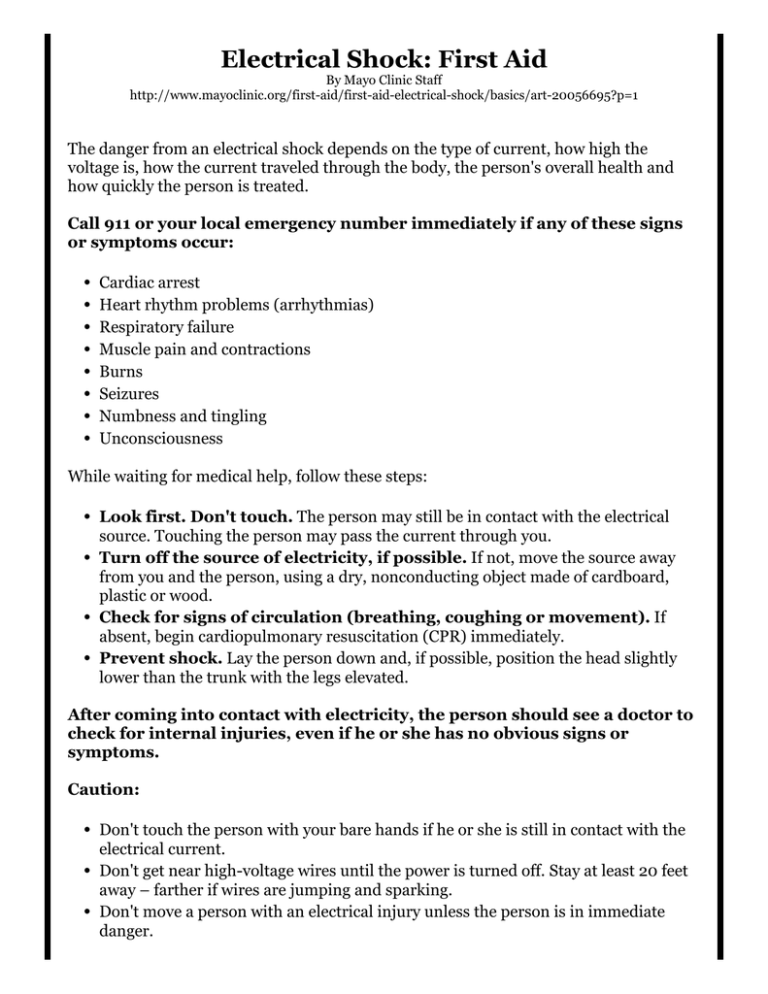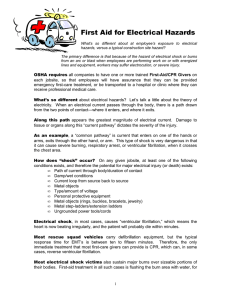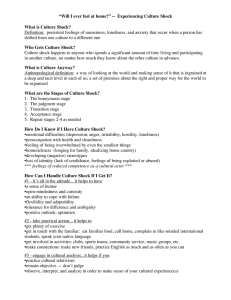Electrical Shock: First Aid
advertisement

Electrical Shock: First Aid By Mayo Clinic Staff http://www.mayoclinic.org/first-aid/first-aid-electrical-shock/basics/art-20056695?p=1 The danger from an electrical shock depends on the type of current, how high the voltage is, how the current traveled through the body, the person's overall health and how quickly the person is treated. Call 911 or your local emergency number immediately if any of these signs or symptoms occur: • • • • • • • • Cardiac arrest Heart rhythm problems (arrhythmias) Respiratory failure Muscle pain and contractions Burns Seizures Numbness and tingling Unconsciousness While waiting for medical help, follow these steps: • Look first. Don't touch. The person may still be in contact with the electrical • • • source. Touching the person may pass the current through you. Turn off the source of electricity, if possible. If not, move the source away from you and the person, using a dry, nonconducting object made of cardboard, plastic or wood. Check for signs of circulation (breathing, coughing or movement). If absent, begin cardiopulmonary resuscitation (CPR) immediately. Prevent shock. Lay the person down and, if possible, position the head slightly lower than the trunk with the legs elevated. After coming into contact with electricity, the person should see a doctor to check for internal injuries, even if he or she has no obvious signs or symptoms. Caution: • Don't touch the person with your bare hands if he or she is still in contact with the • • electrical current. Don't get near high-voltage wires until the power is turned off. Stay at least 20 feet away – farther if wires are jumping and sparking. Don't move a person with an electrical injury unless the person is in immediate danger. References: 1. 2. 3. What to do in a medical emergency: Electrical injury-shock. American College of Emergency Physicians. http://www.emergencycareforyou.org/EmergencyManual/WhatToDoInMedicalEmergency/Defa ult.aspx?id=236&terms=Electrical+shock. Accessed Feb. 13, 2012. First aid for electric shock. American Institute for Preventive Medicine. http://www.healthy.net/scr/Article.asp?Id=1490&action=print. Accessed Feb. 13, 2012. McPhee SJ, et al. Current Medical Diagnosis & Treatment 2012. 51st ed. New York, N.Y.: The McGraw-Hill Companies; 2012. http://www.accessmedicine.com/resourceTOC.aspx?resourceID=1. Accessed Feb. 13, 2012. Mar. 15, 2012 Original article: http://www.mayoclinic.org/first-aid/first-aid-electrical-shock/basics/art-20056695





